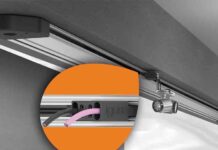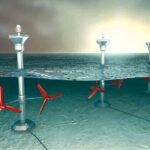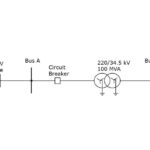
Power cables are essential components in modern electrical and electronic systems, providing a reliable means of transmitting electrical energy from one point to another. These cables are used in a wide range of applications, from household wiring and industrial machinery to high-voltage power transmission networks. A power cable typically consists of conductors, insulation, and protective sheathing, each designed to ensure safety, durability, and efficient power delivery. The selection of power cables depends on various factors such as voltage levels, environmental conditions, and the specific requirements of the application.
Power cables have played a crucial role in electricity transmission and distribution for over a century. From early copper conductors to modern High-Voltage Direct Current (HVDC) cables, innovations in material science, insulation, and design have significantly improved efficiency, durability, and safety. With the global push towards renewable energy and smart grids, power cables are evolving to meet the growing demands of the modern world. This article explores the latest advancements in power cables, including superconducting cables, high-temperature insulation, fiber optic integration, and sustainable solutions.
Historical Perspective and Types of Power Cables
Power cables have evolved significantly since their inception in the late 19th century, playing a crucial role in electricity transmission and distribution. Early power cables were simple copper conductors wrapped in natural rubber insulation, but as demand for efficient and safe electrical systems grew, advancements led to the development of oil-impregnated paper insulation and later, synthetic materials like PVC and XLPE (cross-linked polyethylene).
Today, power cables are categorized based on their voltage capacity and application, including Low-Voltage (LV) cables for household and commercial use, Medium-Voltage (MV) cables for industrial and substation connections, and High-Voltage (HV) and Extra-High-Voltage (EHV) cables for long-distance power transmission. Specialized cables such as armoured, underground, submarine, and fire-resistant cables further cater to specific needs, ensuring the safe and efficient delivery of electricity in diverse environments. The most common types include:
- Low-Voltage Cables (LV Cables) – Used in residential and commercial buildings, typically operating below 1 kV.
- Medium-Voltage Cables (MV Cables) – Used for industrial and utility power distribution, operating between 1 kV and 69 kV.
- High-Voltage Cables (HV Cables) – Essential for transmitting electricity over long distances, operating above 69 kV.
- Extra High Voltage (EHV) and Ultra High Voltage (UHV) Cables – Used in cross-border and offshore transmission, exceeding 230 kV and sometimes reaching 800 kV or more.
Advancements in materials and engineering have improved their efficiency, reliability, and sustainability.
Key Technological Advances in Power Cables
Superconducting Power Cables
One of the most revolutionary advancements in power transmission is the development of superconducting power cables. Unlike traditional copper or aluminium cables, superconducting cables use materials that exhibit zero electrical resistance when cooled below a critical temperature.
The different configurations can be classified based on the superconducting layer layout for each phase and the voltage level. One design, known as triaxial configuration involves three different phases attached onto a single former, contained in a single cryostat as shown in Figure 1. The detailed structure of the SCs tape is demonstrated in Figure 2.


Superconducting cables offer several advantages over conventional power cables, making them a promising solution for modern electrical grids. One of the most significant benefits is their nearly zero energy loss due to electrical resistance, leading to highly efficient power transmission.
Additionally, these cables have a higher transmission capacity while occupying a more compact space, allowing for more efficient use of infrastructure. Their ability to carry large amounts of electricity also reduces the need for bulky substations, freeing up valuable urban space.
Furthermore, superconducting cables contribute to enhanced grid stability by minimizing power fluctuations and improving reliability. Recognizing these advantages, countries like Germany, Japan, and the USA have already implemented pilot projects to integrate superconducting cables into their power grids, paving the way for a more efficient and sustainable energy future.
High-Temperature Superconductors (HTS) and Insulated Cables
Traditional power cables have limitations in high-temperature environments, often requiring complex cooling systems. High-temperature superconductors (HTS) and advanced insulation materials, such as cross-linked polyethylene (XLPE), have been developed to withstand extreme conditions.

Insulation plays a crucial role in power cable performance and longevity. Recent advances in insulation materials have led to improved cable reliability and efficiency.
- Gas-Insulated Cables (GIL): Using gases like sulphur hexafluoride (SF6) to improve insulation.
- XLPE and EPR Insulation: Enhancing cable flexibility and durability. This advanced polymer offers excellent electrical and thermal properties, allowing for higher operating temperatures and voltages.
- Nanocomposite Insulation: Incorporating nanoparticles into insulation materials can enhance their dielectric strength and thermal conductivity. Providing superior resistance to electrical and thermal stress.
HTS cables are gaining popularity in urban centers where space is limited, and underground cabling is necessary.
Renewable Energy and Advanced Power Cables
As renewable energy generation expands, new challenges in power transmission emerge. Offshore wind farms, solar power plants, and hydropower stations require specialized cables capable of transmitting electricity efficiently over long distances.
Submarine Power Cables
Submarine power cables are specialized electrical cables designed for transmitting electricity across bodies of water, such as seas, rivers, and lakes, connecting power grids between islands, offshore installations, and mainland regions. These cables are typically insulated with durable materials like Cross-Linked Polyethylene (XLPE) or oil-impregnated paper to withstand harsh underwater conditions, including high pressure, mechanical stress, and corrosion.
They can be categorized as either HVAC (High-Voltage Alternating Current) or HVDC (High-Voltage Direct Current), with HVDC cables being preferred for long-distance transmission due to lower energy losses.
The installation of submarine power cables requires advanced engineering techniques, including precise seabed mapping, cable laying by specialized vessels, and protective measures like trenching or armoring to prevent damage from marine activities.
Submarine power cables play a vital role in renewable energy projects, such as offshore wind farms, and facilitate international electricity trade, ensuring efficient and sustainable energy distribution across regions.

With increasing offshore wind and intercontinental power links, submarine cables have become critical. Innovations include:
- HVDC Submarine Cables: Reducing energy loss in long-distance transmission.
- Self-Repairing Cables: Using advanced materials that heal minor damages.
- Environmentally Friendly Cables: Environmental concerns have led to significant innovations in sustainable power cable technologies, focusing on reducing waste and minimizing ecological impact. One major advancement is the development of recyclable materials, allowing cables to be efficiently reused at the end of their life cycle.
Additionally, halogen-free cables have been introduced to enhance fire safety and prevent the release of toxic compounds, making them safer for both humans and the environment. Another promising innovation is bio-based insulation, which utilizes renewable materials like plant-based polymers to replace traditional synthetic insulation, reducing reliance on fossil fuels. These advancements contribute to a greener and more sustainable future for electrical infrastructure.
Smart Cables for Renewable Grids
Renewable energy sources require dynamic power distribution networks. The integration of sensors and communication technologies into power cables has led to the development of smart cables, which offer advanced monitoring and diagnostic capabilities.

These cables play a crucial role in enhancing grid reliability and optimizing maintenance strategies.
Key Features of Smart Cables
- Real-Time Monitoring and Diagnostics: Smart cables continuously assess their condition, providing valuable data on performance and potential issues.
- Temperature Sensing: Fiber optic sensors embedded within cables enable continuous temperature monitoring along the entire cable length.
- Strain and Vibration Detection: Sensors detect mechanical stress and vibrations, alerting operators to potential damage or faults.
- Partial Discharge Monitoring: Advanced sensors identify partial discharges, indicating insulation degradation before critical failure occurs.
Benefits of Smart Cables
- Improved Asset Management and Maintenance Planning: Collected data helps optimize maintenance schedules, reducing downtime and costs.
- Early Fault Detection and Prevention: Proactive monitoring allows for early issue identification, preventing unexpected failures.
- Enhanced Grid Reliability and Stability: Faster fault response and better grid management improve overall electrical infrastructure performance.
Smart cables, embedded with sensors and IoT (Internet of Things) technology, are improving grid management by:
- Automatically adjusting transmission capacity.
- Reducing overload risks.
- Enhancing energy storage and integration with decentralized grids.
Sustainability and Future Trends in Power Cables
With growing environmental concerns, the power cable industry is adopting sustainable materials and manufacturing practices.
Eco-Friendly Cable Materials
- Biodegradable insulation materials like bio-based polyethylene.
- Lead-free and halogen-free flame-retardant coatings.
- Recyclable metal conductors to reduce mining impact.
AI and Predictive Maintenance
AI-powered monitoring systems are now integrated into cable networks to:
- Predict and prevent failures
- Optimize power transmission
- Extend cable lifespan and reduce costs
Wireless Power Transmission
While still in the experimental phase, Wireless Power Transmission (WPT) could eliminate the need for physical cables in certain applications. WPT technologies such as resonant inductive coupling and microwave power transfer are being explored for urban infrastructure.
Analysis of Reasons behind Cable Failure
Cable failure can occur due to various mechanical, electrical, environmental, and human factors. Mechanical stresses such as excessive tension, bending, crushing, or abrasion can damage insulation and conductors, leading to failure.
Electrical issues, including overloading, voltage surges, and improper grounding, can cause overheating, short circuits, or insulation breakdown.
Environmental factors like moisture ingress, chemical exposure, extreme temperatures, and prolonged UV radiation can degrade insulation and conductors over time.
Poor manufacturing quality, including defective insulation or conductors, can also contribute to early failure.
Improper installation, such as using the wrong cable type, poor jointing, excessive pulling force, or placing cables near heat sources, can significantly reduce cable lifespan.
Figure 6 illustrates the cable fault statistics for distribution systems, Electric Multiple Units (EMUs) and renewable energy farms.
Aging naturally degrades insulation, while oxidation and conductor fatigue increase resistance, leading to inefficiencies and eventual failure. Rodents and pests can physically damage cables by chewing through insulation, exposing live wires and causing short circuits. Electromagnetic interference from nearby power sources, harmonics from electronic devices, or radio frequency interference can also disrupt cable performance, particularly in data and communication cables. Preventive measures such as proper installation, regular inspections, using suitable cable types for the environment, and protective shielding can help extend cable longevity and prevent failures.

Conclusion
The field of power cable technology is experiencing rapid advancements, driven by the need for more efficient, reliable, and sustainable energy transmission. The power cable industry is undergoing a transformation, driven by the need for higher efficiency, sustainability, and smart technology integration.
Advances such as superconducting cables, fiber-optic hybrid systems, and AI-driven maintenance are shaping the future of power transmission.
As global energy demands rise, the role of innovative power cables will become even more critical in ensuring reliable, efficient, and eco-friendly electricity distribution. As we continue to face growing energy demands and the challenges of integrating renewable sources, power cable technology will play a crucial role in building a more resilient and sustainable energy future.
Future developments will likely focus on ultra-efficient materials, self-repairing cables, and seamless integration with smart grids. The next decade promises groundbreaking innovations that will redefine the way electricity is transmitted worldwide.

Bhumika Shrimali is a PhD Scholar at Electrical Department in College of Technology and Engineering, MPUAT, Udaipur.

Dr. Vikramaditya Dave is a Professor at Electrical Department in College of Technology and Engineering, MPUAT, Udaipur.


















